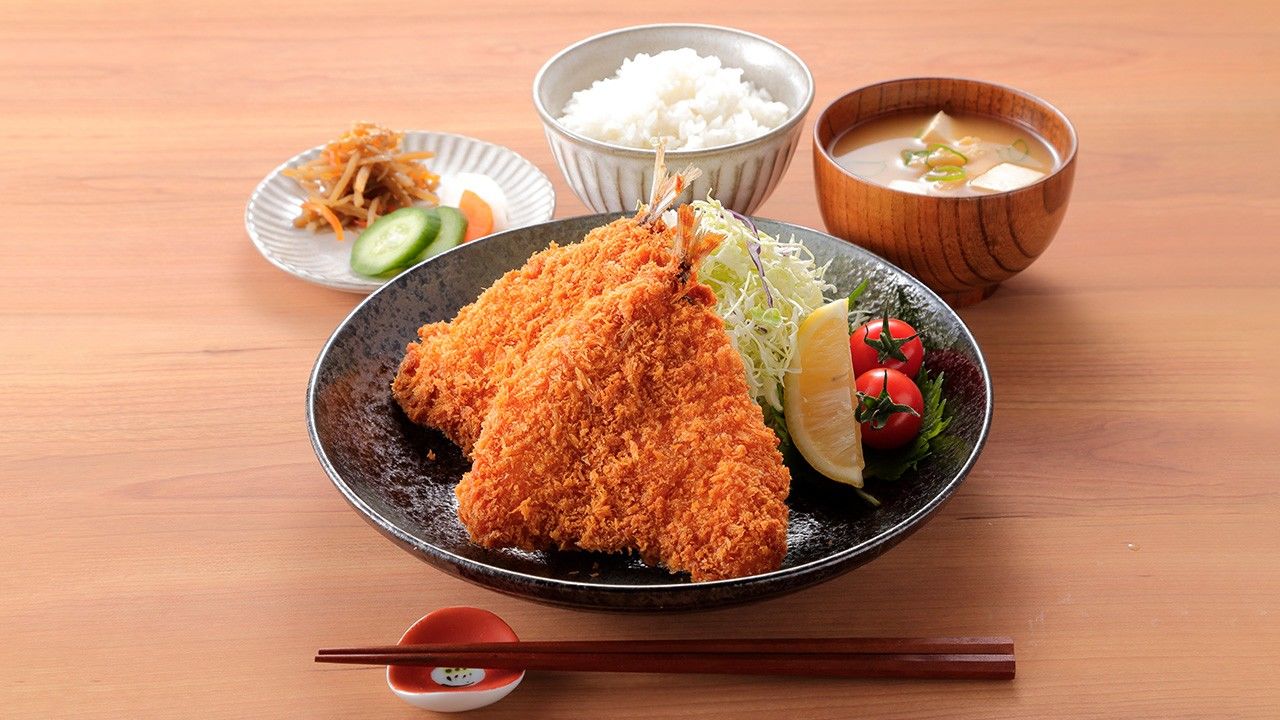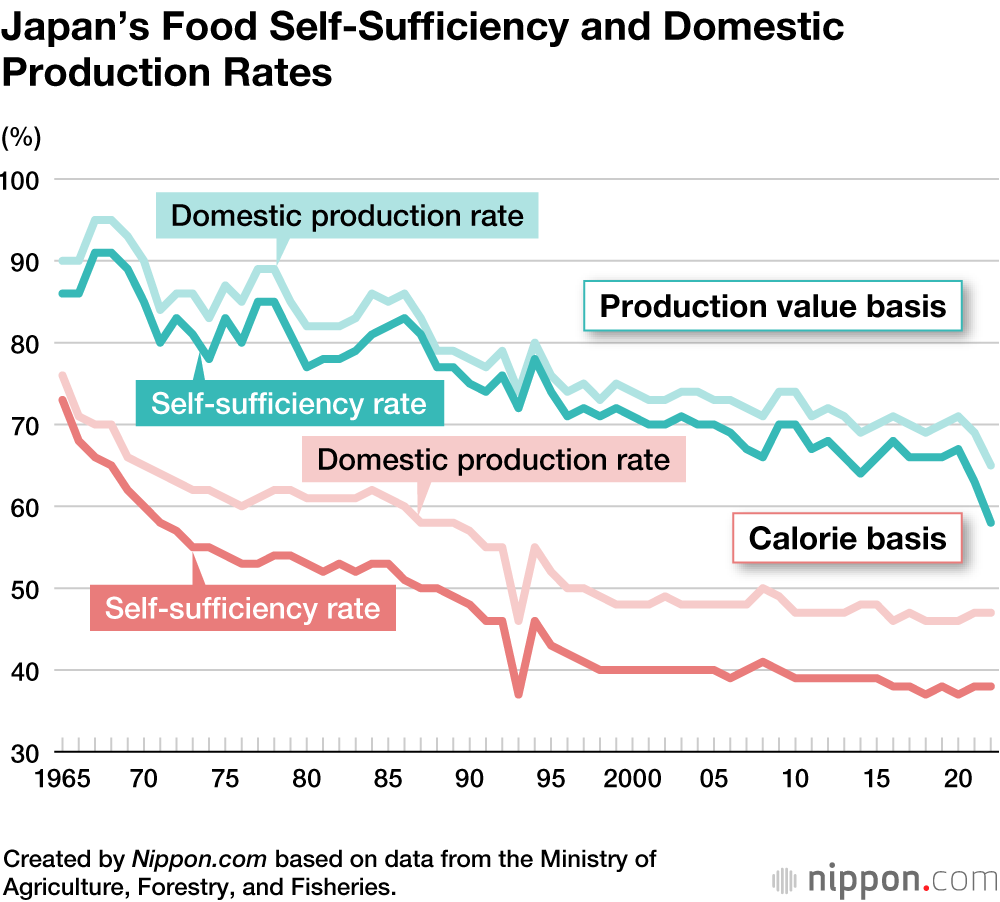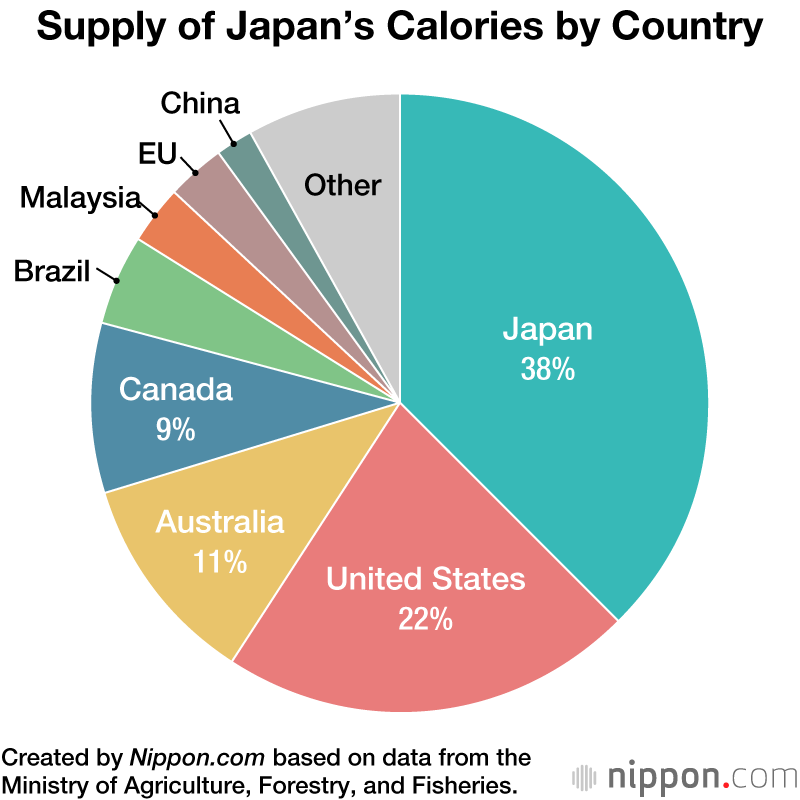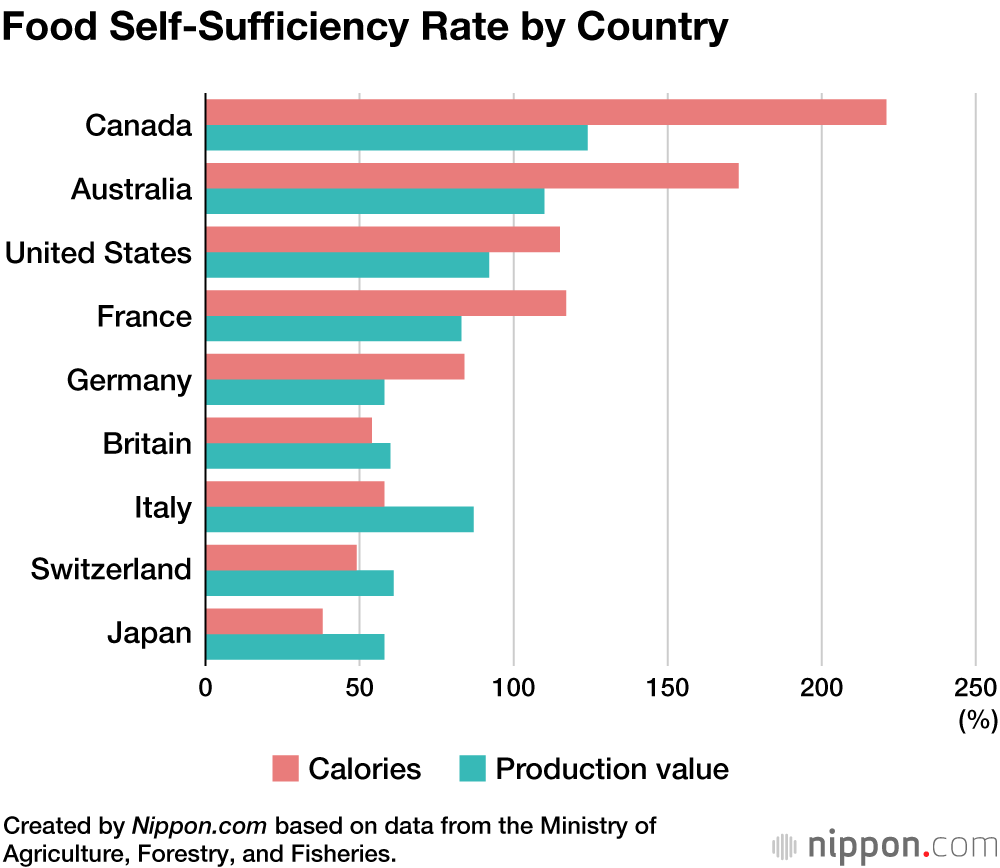
Japan Sets New Record Low for Food Self-Sufficiency on a Production Value Basis
Economy Lifestyle Food and Drink- English
- 日本語
- 简体字
- 繁體字
- Français
- Español
- العربية
- Русский
Japan’s food self-sufficiency ratio for fiscal 2022 based on production value fell to a record low of 58% according to data compiled by the Ministry of Agriculture, Forestry, and Fisheries, for a year-on-year decrease of five percentage points. Even though food imports were at the same level as the previous year, the value of imports swelled due to soaring international prices for grain, feed, and fertilizer combined with the falling Japanese yen. The self-sufficiency rate is 17 points lower than the target for fiscal 2030 set by the government of 75% self-sufficiency in terms of production value.
Meanwhile, Japan’s food self-sufficiency on a calorie basis was 38%, unchanged from the previous year. Negative factors were the return to normal harvests for wheat and soybeans, after the bumper crops in fiscal 2021, as well as declines in the haul of mackerel and other fish. These factors were balanced by the fall in the consumption of oil and fats, which are dependent on imports. The fall in self-sufficiency levelled off in fiscal 2020 around 37%, but Japan is far from reaching the government target of 45% for calorie-based food self-sufficiency by fiscal 2030.
The food self-sufficiency rate is calculated by excluding livestock products produced using imported feed in order to gain an accurate understanding of domestic production. However, the domestic production rate does not reflect the feed self-sufficiency rate based on the view that all livestock products raised within Japan are domestically produced. The difference between the self-sufficiency rate and the domestic production rate indicates the degree of dependence on foreign feed.
The calorie-based food self-sufficiency rates of major grain exporters Canada, Australia, and the United States, are well above 100%. Italy, which exports many high-priced vegetables and fruits, also has a strong self-sufficiency rate in terms of production value. Japan’s self-sufficiency rate for both calories and production value remains low compared to other countries.
(Translated from Japanese. Banner photo © Pixta.)



